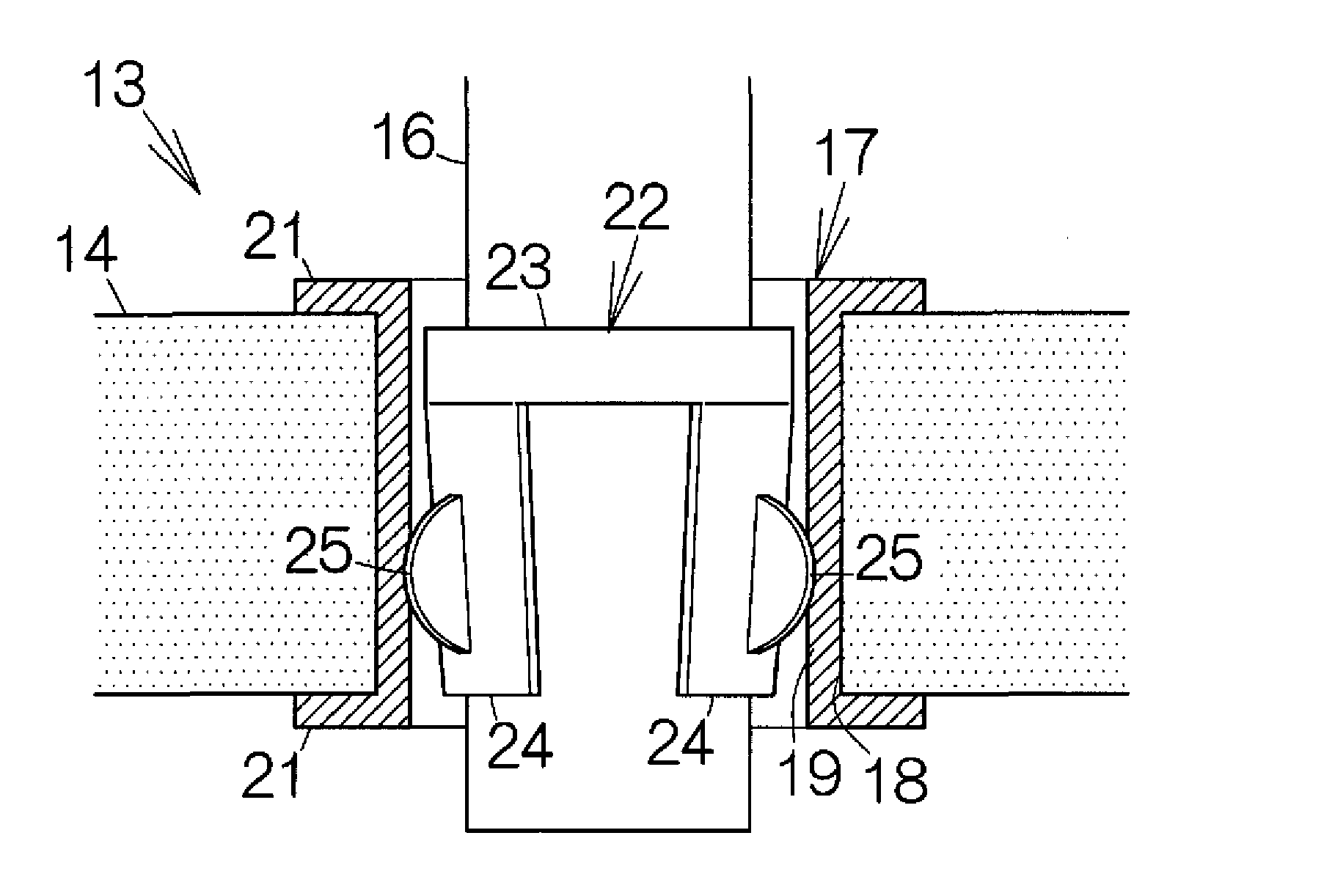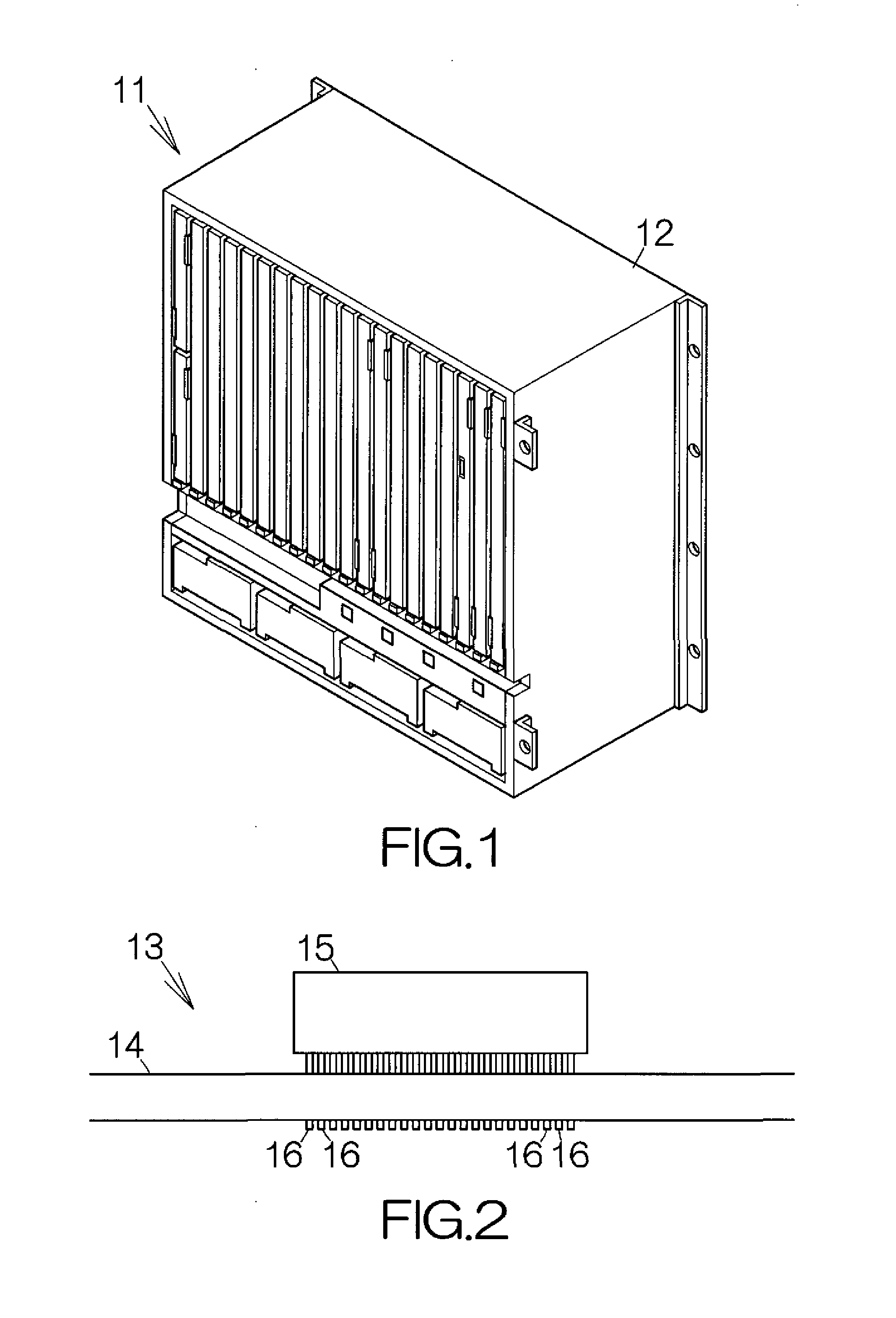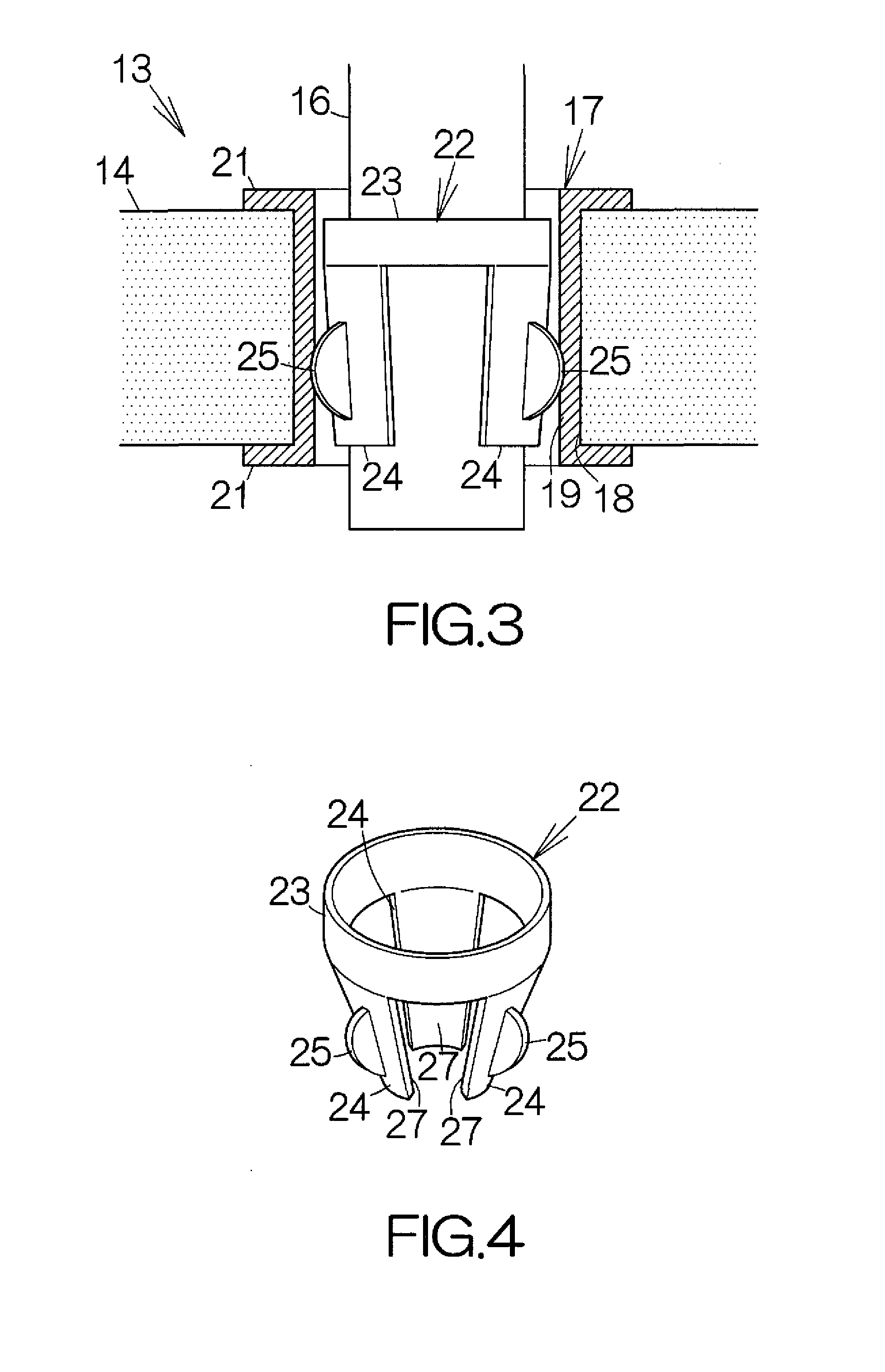Connecting terminal for receiving lead terminal in printed wiring board
- Summary
- Abstract
- Description
- Claims
- Application Information
AI Technical Summary
Benefits of technology
Problems solved by technology
Method used
Image
Examples
second embodiment
[0060]FIG. 9 schematically illustrates a connecting terminal 22b according to the present invention. The connecting terminal 22b includes a cylindrical surrounding member 31 defining a columnar space. The outer diameter of the surrounding member 31 is set smaller than the inner diameter of the metal wall 19. The inner diameter of the surrounding member 31 is set larger than the outer diameter of the lead terminal 16. The surrounding member 31 is made of an electrically-conductive material such as phosphor bronze. A gap 32 is defined in the surrounding member 31 along a generatrix of the columnar space. The gap 32 extends from the upper end to the lower end of the surrounding member 31. The gap 32 allows variation in the circumferential length of the surrounding member 31 in a range of the width of the gap 32.
[0061]Three first elastic protrusions or first elastic pieces 33 are formed on the inner surface of the surrounding member 31, for example. The first elastic pieces 33 extend in...
third embodiment
[0068]FIG. 13 schematically illustrates a connecting terminal 22c according to the present invention. The connecting terminal 22c includes a cylindrical surrounding member 41 defining a columnar space. The outer diameter of the surrounding member 41 is set smaller than the inner diameter of the metal wall 19. The inner diameter of the surrounding member 41 is set larger than the outer diameter of the lead terminal 16. A gap 42 is defined in the surrounding member 41 along a generatrix of the columnar space. The gap 42 extends from the upper end to the lower end of the surrounding member 41. A first elastic piece 43 is formed integral with the inner surface of the surrounding member 41.
[0069]Referring also to FIG. 14, the first elastic piece 43 is connected to the upper end of the surrounding member 41. The first elastic piece 43 is formed in a cylindrical shape, for example. The first elastic piece 43 extends into the columnar space. The aforementioned gap 42 is likewise formed in t...
fourth embodiment
[0075]FIG. 16 schematically illustrates a connecting terminal 22d according to the present invention. The second elastic pieces 35 in the uppermost row are designed to extend upward from the surrounding member 31 in the connecting terminal 22d. The second elastic pieces 35 in the lower row are designed to extend downward from the surrounding member 31. Like reference numerals are attached to the structure or components equivalent to those of the aforementioned connecting terminal 22b.
[0076]As shown in FIG. 17, a tube 51a is put on the upper end of the surrounding member 31 of the connecting terminal 22d prior to insertion of the connecting terminal 22d into the through hole 17. A tube 51b is likewise put on the lower end of the surrounding member 31. The tubes 51a, 51b shrink in response to heat or ultraviolet rays, for example. The tubes 51a, 51b squeeze the surrounding member 31. The second elastic pieces 35 move toward the columnar space. The surrounding member 31 gets smaller i...
PUM
 Login to View More
Login to View More Abstract
Description
Claims
Application Information
 Login to View More
Login to View More - R&D
- Intellectual Property
- Life Sciences
- Materials
- Tech Scout
- Unparalleled Data Quality
- Higher Quality Content
- 60% Fewer Hallucinations
Browse by: Latest US Patents, China's latest patents, Technical Efficacy Thesaurus, Application Domain, Technology Topic, Popular Technical Reports.
© 2025 PatSnap. All rights reserved.Legal|Privacy policy|Modern Slavery Act Transparency Statement|Sitemap|About US| Contact US: help@patsnap.com



